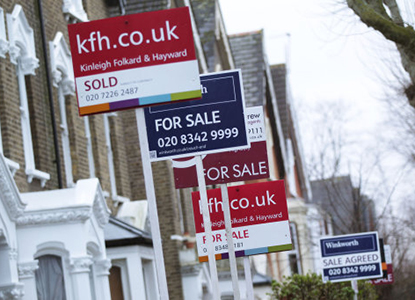By Richard Johnstone | 18 June 2014
The Help to Buy equity loan programme violated Treasury guidelines because it was introduced without an assessment of the alternatives, MPs have said today.

Examining the scheme, which is intended to help people get on the property ladder and can cover as much as 20% of the purchase price, the Public Accounts Committee said the government had yet to demonstrate that it provided value for money.
Committee chair Margaret Hodge said the government had been able to get the programme up and running quickly following its announcement in the 2013 Budget. Nearly 13,000 homes were purchased using the loans in Help to Buy’s first nine months, with as much as £9.7bn now available in total. The loan acts to bolster homebuyers’ deposits for new homes, allowing those with only 5% deposits to buy homes, and is interest free for five years.
‘Its aims are ones we all support: improving access to mortgage finance, increasing housing supply and contributing to economic growth,’ Hodge said.
However, the MPs warned that DCLG does not understand the overall impact of its housing strategy or the combined effectiveness of all its initiatives, which also include underwriting of mortgages through another element of Help to Buy.
DCLG did not consider alternative ways to deliver its objectives before implementing the equity loans, in what Hodge called a violation of the Treasury’s Green Book guidance on public spending
‘This means it has committed to spending up to £10bn on supporting Help to Buy without establishing whether it represents the most effective way of using taxpayers’ money to achieve its objectives.’
Under current plans, the department will not carry out a comprehensive evaluation of the scheme until 2015, by which time billions of pounds will already have been spent, she added.
‘That evaluation needs to ask three things: whether more people purchased properties than would have done without the scheme; whether builders built more houses than they would have built otherwise; and what effect the scheme could be having on house prices.’
According to MPs, the equity loans, which will be repaid within 25 years or when borrowers sell their home, had proved popular in the North and the Midlands, and in areas that have already seen regeneration, such as Milton Keynes.
‘The department should assess the scheme’s effectiveness in different local and regional housing markets and tailor the scheme so it is effective in all regions,’ Hodge added.
Today’s Help to Buy equity loans report also warned the department would need to manage the risks associated with the loans.
‘Managing such a portfolio is new territory for both the department and the Homes and Communities Agency, and the ongoing monitoring required will create a heavy administrative burden for both organisations, potentially over decades,’ Hodge added.
‘The department must be mindful of these risks – and it must demonstrate that the scheme is value for money to the taxpayer.’
Responding to the report, housing minister Kris Hopkins said the scheme was helping build more homes, and had an estimated wider economic benefit of as much as £1.9bn.
‘So it is offering excellent value for money for taxpayers, and to suggest otherwise is simply absurd,’ he added.




















